
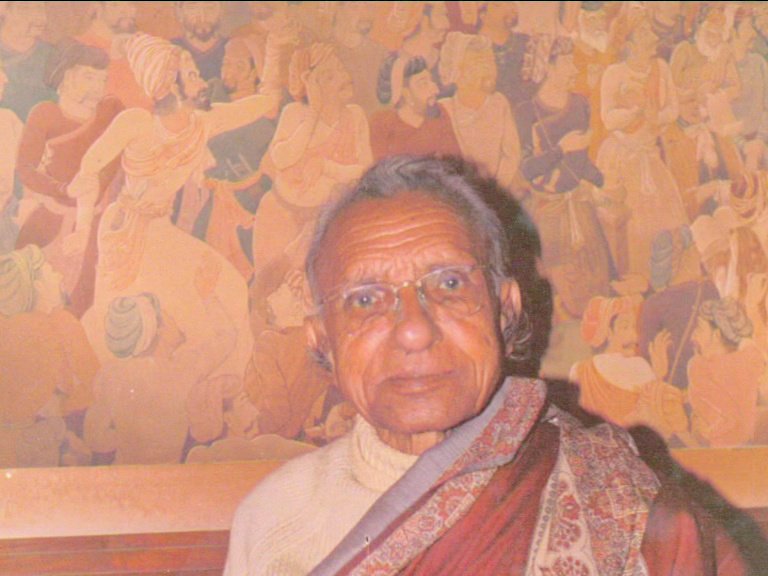
- Prof. Sukhvir Sanghal
Prof. Sukhvir Sanghal was born on 14th July 1914 in Muzaffarnagar, Uttar Pradesh, India. He passed the High School Examination in 1930 from DAV High School, Muzaffarnagar. His father wanted him to become an engineer but he had a keen interest in paintings and music since childhood. When he was giving his engineering exam, unfortunately or fortunately ink pot spoiled his answer sheet, so by luck he entered in the field of art during Indian National Movement. As he was actively participating in non-cooperation movement, he was arrested and was advised to travel far away from his hometown. Fortunately, he happened to meet a good friend in Lucknow who encouraged Sanghal to join Lucknow School of Arts seeing his immense inclination towards drawing and painting. After completing 5 years diploma in Fine Arts in 1936, he certainly earned a degree but his yearning for authentic Indian art style remained unsatiated. This desire paved his way to meet a renowned teacher of Indian style Asit Kumar Halder (then Principal of Lucknow School of Arts) who imparted him knowledge and mentored him in the field of Arts.
He established an exclusive school for Fine Arts at Allahabad in 1938 as the ‘Allahabad School of Art’. The school was officially registered and renamed as ‘Kala Bharti Parishad’ during meeting with Ex. President of India Dr. Rajendra Prasad, Art’s critic Rai Krishan Das and poetess Mahadevi Verma. It imparted training on Indian style of Painting, Sculptures, Instrumental, Dance – ‘Bharatnatyam’, ‘Manipuri’, ‘Kathak’ and ‘Modern’. He remained director of Kala Bharati from 1938 to 1964. The school was run by a close aid eventually shutting down after a few years.
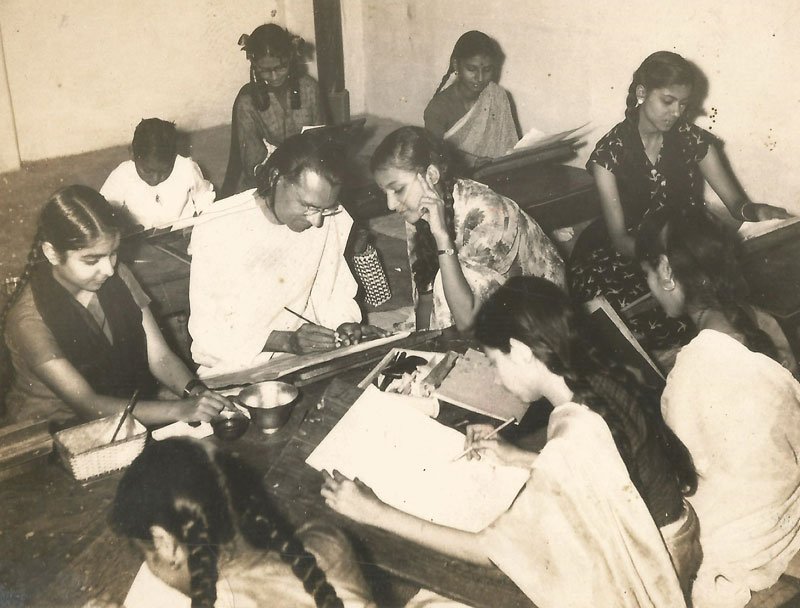
Prof. Sukhvir Sanghal teaching students at Kala Bharti in Allahabad

Prof. Sukhvir Sanghal with Sonia Gandhi at an exhibition organised in new delhi in 1992
Sanghal joined his alma matter Lucknow School of Arts in 1964 as a Professor of Fine Arts. In 1967 he became the Principal of Lucknow School of Arts after relentlessly serving the school till 1973. He continued his Allahabad legacy of Kala Bharti and took art classes at his own residence in Lucknow till 2004. He formulated the syllabus of Fine Arts of Kanpur University and published the book ‘Bhartiya Chittrakala Paddhati’ based on that in 1985 in Hindi. Sanghal was art advisor of Pandit Jawaharlal Nehru (First Prime Minister of India), as Nehru ji was very fond of Indian Art and on his personal advice, he has written a book on Philosophy of Art ‘Evolution of Art and Artists’. This book took 12 years to complete and is yet to be published. During that time Nehru ji insisted him to teach his daughter Indu (Smt. Indira Gandhi, then Congress President and Prime Minister of India) which was accepted by Sanghal and he taught her Arts. Luckily her marriage card was also designed by him and it was praised a lot by Nehru ji and dignities.

The book cover of 'Bhartiya Chitrakala Paddhati' released in 1985.
Prof. Sukhvir Sanghal formulated the syllabus of Fine Arts of Kanpur University and published the book ‘Bhartiya Chittrakala Paddhati’ based on that in 1985 in Hindi for dealing with aesthetical, historial and specially technical aspects of Indian art. This book widely covers different aspects of art. It explains the definition of art, the significance of art in our lives, nature of art and its various dimensions. Prof. Sanghal goes on to explain the aesthetical aspect of art from his perpective. It truely reflects the stress he laid on 'satyam', 'shivam' 'sundaram', the rasas (emotional falvors), the six principles of Art and the eternal joy that art provides.
The second part of the book throws light on the historical aspects of art - the different styles of art that existed at various points in time.
The third part of the book is the most interesting part as it covers the practical aspects of art in the words of Prof. Sukhvir Sanghal. The basics of drawing with beautiful drawing illustrations, his original methods of making a perfect face, figure, hands, legs, leaves, flowers, trees, etc. He also explains the perfect measurements to draw which is totally in sync with how nature made everything. The book explains his painting techniques and what makes his paintings so unique and ever lasting. His wash technique is explained in his book in great detail. How is his wash technique is different and the way he evolved the existing techniques.
On a special incident, he got inspiration for art education through writing when in 1942 on the day of holi at 6 in the morning Pandit Nehru invited him to Anand Bhavan to prepare an invitation card for his daughter’s (Mrs.Indira Gandhi) wedding. As a request to prepare wedding invitation in Indian style, he discussed on various art aspects with Pandit Nehru for 2 hours and at the end he advised Sanghal to write down all the thoughts. It was this discussion which inspired him to start writing the epic ‘Evolution of Art and Artists’.
This book is written in English in three huge volumes and it took 12 years for Prof. Sukhvir Sanghal to write this book.
All his contributions in the field of art are the result of his firm faith in a super-abstract God whose existence he easily and successfully proved in the history of philosophy in this book by means of the venetian theory of colors. Unfortunately the book is still unpublished and it will be one of our efforts to get it published and bring it forward for everyone.
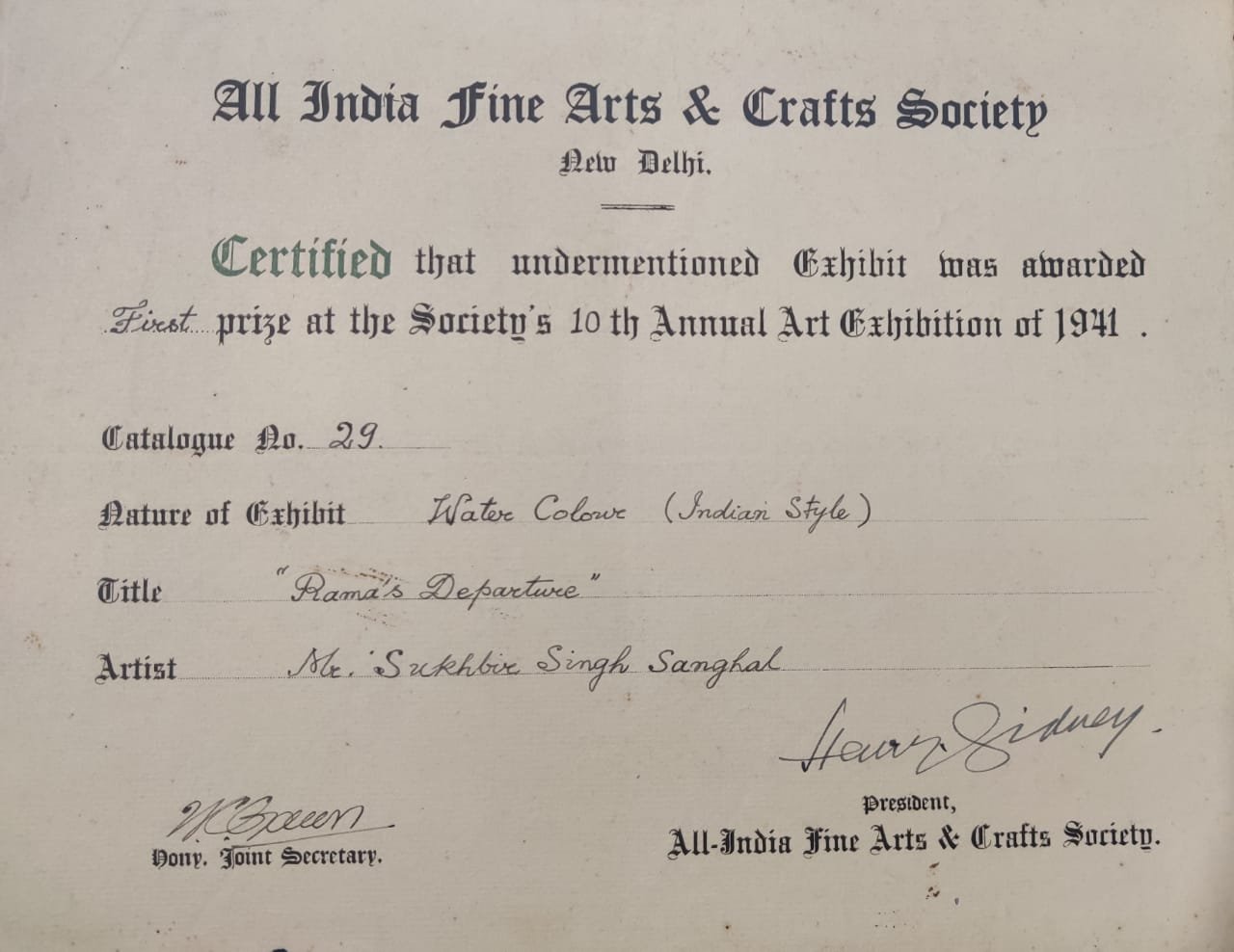
Prof. Sukhvir Sanghal was awarded first prize by All India Arts and Crafts Society New Delhi in 1941.
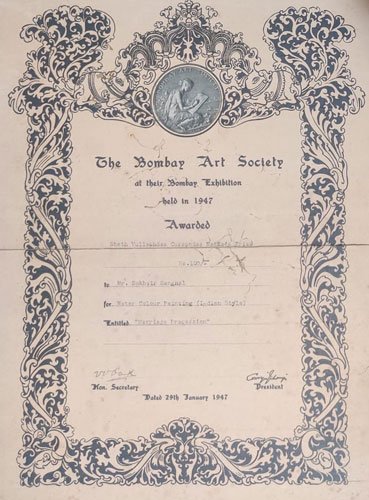
Prof. Sukhvir Sanghal was awarded first prize by Bombay Arts Society in 1947.
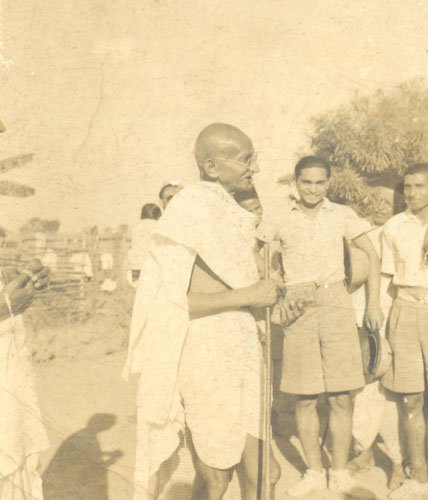
Prof. Sukhvir Sanghal with Mahatma Gandhi.